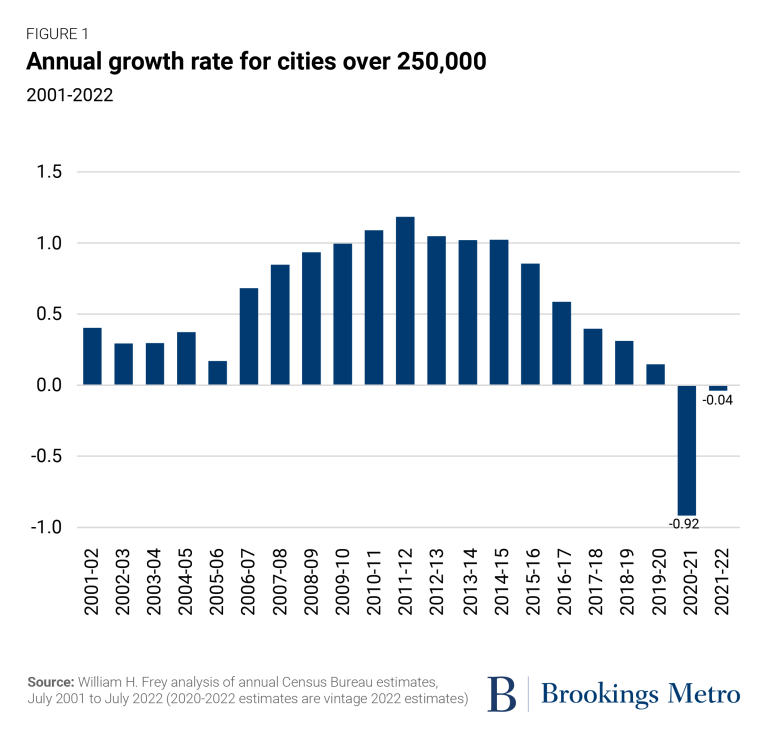Hi friends! A big thank you to those who have recently become paying subscribers! If you get value out of this newsletter, and believe in supporting people to do meaningful work that they love, please consider upgrading! And if you can’t do that just yet, hit the ❤️ button above to spread cheer. Thanks!
Remote work upended the calculus of living in American cities. Climate change, long-predicted to drive people away from wildfires in the West and flooding along the coasts, may finally be propelling people out of risky locales. Increased migration of college-educated Black Americans to southern cities, and more international immigration, are driving population gains in some cities. What do all these trends mean in the long term?
Over a multi-part series, I’ll take a look at some recent research and commentary on American mobility and make some predictions. Today, I’ll discuss remote work, and in my next column in the series, I’ll look at the impact of climate change.
Part One: Remote work
Was the remote work move boom overblown? Did we go through the Five Stages of Grief in cities only to end up back where we were in 2019? Let’s explore some recent articles on these topics.
Last week, William Frey at the Brookings Institution released new research showing that big American cities are starting to recover from their historic population losses in the first year of the pandemic.
Frey explains that “the majority of large cities have shown lower population losses, greater gains, or a change from losses to gains from July 2021 to July 2022.” He notes:
among the 88 cities with populations exceeding 250,000, 56 “did better” in terms of greater population growth or reduced decline in 2021-22 than was the case in 2020-21. Among these 56 cities, 20 showed a lower rate of decline, 16 showed a greater rate of growth, and 20 flipped from decline to growth. The latter category includes Atlanta, Dallas, Denver, Houston, Seattle, San Diego, Minneapolis, and Washington, D.C.
Frey says “there are reasons to be more optimistic about cities’ demographic futures.”
Coming from Philadelphia, the single top-10 city that didn’t trim its losses in 2021, I would frame those numbers another way: 60 percent of large American cities are continuing to decline since the onset of the pandemic, and 36 percent of those cities declined more in 2021-2022 than in the first year of the pandemic. Yikes!
Frey notes that this isn’t the first time that big city populations have declined, of course. Most recently, in the early 2000s, when mortgages were all too easy to get and the exurbs bloomed, urban populations slumped. But they bounced back.
Urban champions will say that cities always bounce back, but will this time be different? I think this time will be different, but not because people are leaving for remote work, per se.
Still, the New York Times is obsessing on remote work and published an exploration of the places most effected by remote work, and an accompanying list of the occupations most effected by remote work. The findings are what you would expect: people with jobs that can easily be done at home (writing, software development, etc.) are now predominately working from home. And people who can work remotely (people in mostly white-collar jobs) are moving to less expensive metro areas and to vacation home areas, such as the Jersey Shore and Cape Cod. An interesting insight: the higher a person’s income, the more likely they are to be working remotely.
I found myself a little frustrated that the piece does not mention that overall rates of mobility have continued to decline since the 1950s when more than 20 percent of Americans moved in a given year. Now the rate is under 10 percent, and the pandemic didn’t change that. The piece quotes Nicholas Bloom and Adam Ozimek about how remote work is going to increase mobility, with no mention of the fact that mobility didn’t increase over the past three years and many employers are pulling back on remote work policies.
So is remote work going to break cities over the long term? Or are big cities poised for a rebound? Or is it possible that neither of these narratives is right?
So here’s my first prediction: I predict that at least 25 of the 88 major cities listed in Frey’s analysis won’t post population gains by the 2030 Census, and I’ll lay out some reasons why below.









